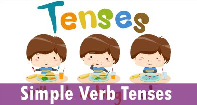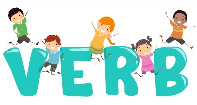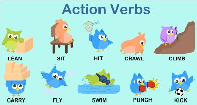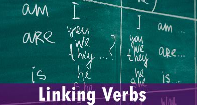Change Avatar
Linking Verbs
Linking Verbs
What Are Linking Verbs?
Linking verbs are used to describe the subject of a sentence or to reidentify the subject. It links the subject to the complement.
It tells what the subject IS, not what it is doing (like an action verb).

DESCRIBE
| I | am | tired |
| subject | linking verb | complement (adjective) |
REINDENTIFY
| Mrs. Nguyen | is | a teacher. |
| subject | linking verb | complement (noun) |
What is a subject complement?
A subject complement is the word, phrase, or clause that follows a linking verb, either describing or reidentifying the subject of the sentence.
When it describes the subject, the complement is an adjective.
He seems angry.
- Angry is an adjective, and describes how he seems.
Our lunch tastes disgusting.
- Disgusting is an adjective, because it describes how the lunch tastes.
When it reidentifies the subject, the complement is a noun.
Sarai is a future congresswoman.
- Congresswoman is a noun, and identifies Sarai as being a congresswoman.
They are students.
- Students is a noun, and reidentifies the pronoun they as students.
What are some examples of linking verbs?
Linking verbs are usually forms of TO BE - am, is, are, was, were, will be, was being, has been - , but also include sensory words like appear, look, seem, feel, smell, sound, and taste.
• She appears to be his mother.
• Her painting looks colorful.
• This steak smells fantastic.
• It sounds like a racecar engine.
• Your sweater feels fuzzy.
• This lemon tastes sour.
HINT! Here’s a refresher on what TO BE verbs are:











